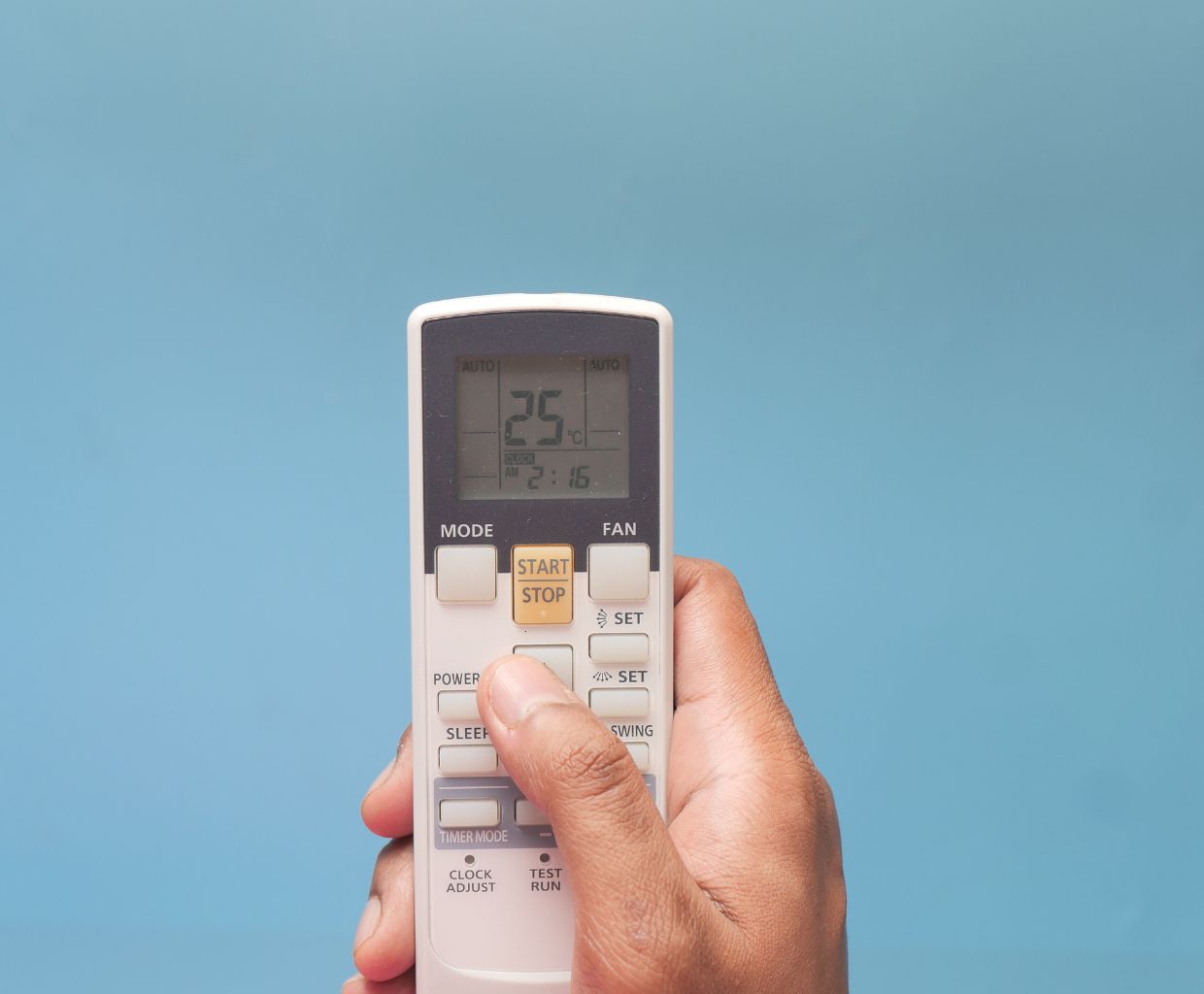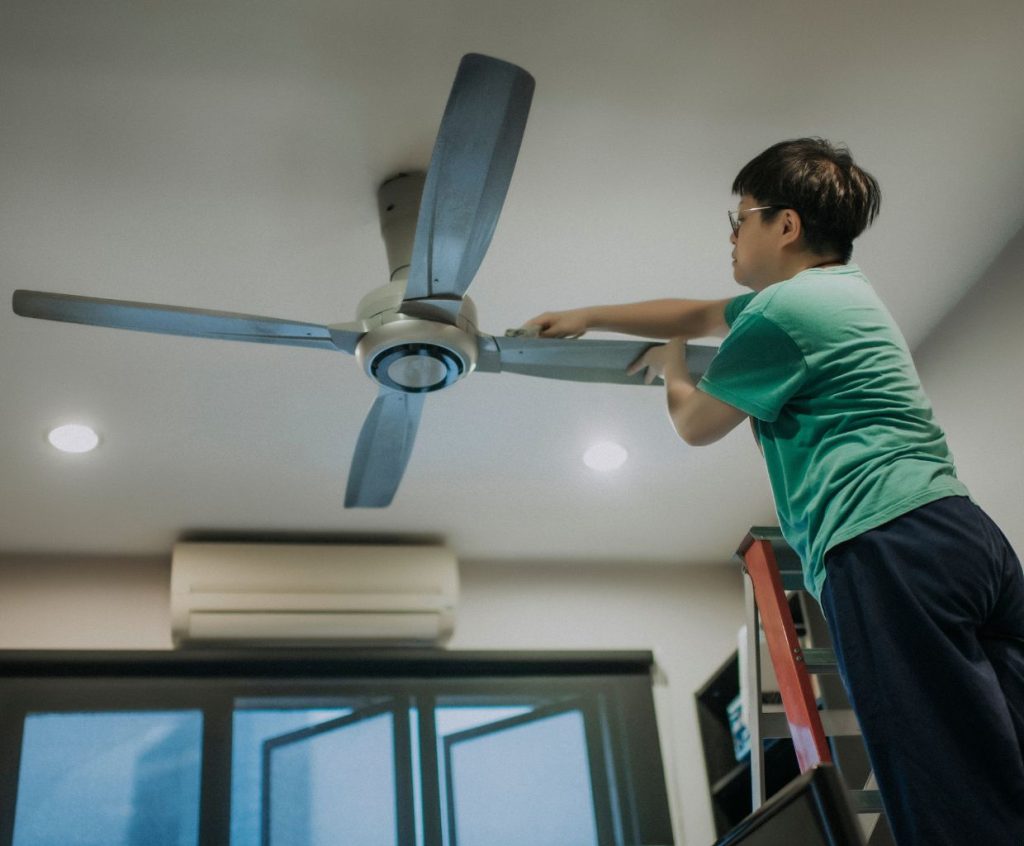5 Tips On Using Your Ceiling Fan In Winter
Ah, winter. The snow is falling, the wind is blowing and all you want to do is curl up on the couch with a blanket and a warm drink. While many people think they can turn off their ceiling fans during this time of year, we’d like to suggest that you reconsider.
In fact, rotating your ceiling fan in reverse can actually help save energy and money — not to mention get rid of those drafty windows! So grab that remote control and let’s get started!
Contents
- 1 5 Tips On Using Your Ceiling Fan In Winter
- 1.1 The Proper Way to Use Ceiling Fans in Winter
- 1.2 Why Use a Ceiling Fan in Winter?
- 1.3 Which Direction Should My Ceiling Fan Be Going?
- 1.4 When to Turn the Fan On Low
- 1.5 When to Turn the Fan On High
- 1.6 When to Turn the Fan Off
- 1.7 Rotating your ceiling fan in reverse during the winter can save you money on your energy bill
- 1.8 Using Your Ceiling Fan In Winter – Conclusion
The Proper Way to Use Ceiling Fans in Winter
Ceiling fans are designed to circulate air in your home and keep you cool in the summer. But did you know that they can also help keep your house warm during the cold months? The best way to use them is by rotating them in reverse—which will actually push warm air down from the ceiling instead of circulating it around the room. This creates an updraft, which pulls cold air out of your attic and vents it through your soffit vents or ridge vent.
- The fan should be going counter-clockwise. In most cases, this means the blades will turn from left to right. If your ceiling fan has reverse switch, you will want to set it so that the blades move from right to left.
- Keep the speed low (no higher than medium). Running your ceiling fans at a higher speed can make it harder for your home’s heating system to keep up with cooling demands, which can lead to overheating issues or even frozen pipes in extreme winter conditions.
- Turn off all other sources of heat in the house–fireplaces and radiators included–before turning on any fans.
- If possible, leave one window slightly open when using a ceiling fan during wintertime; this allows air flow through without causing drafts that could disrupt sleeping patterns or create uncomfortable temperatures inside bedrooms at night.
Why Use a Ceiling Fan in Winter?
Ceiling fans are often a popular choice for cooling down a room during the hot summer months, but you can also use them in winter to help warm up your home. Fans move air around, which helps circulate heat and keep it evenly distributed throughout your home. This may be especially helpful if you live in an apartment building and don’t have control over your heating system or access to additional sources of heat like fireplaces or radiators.
- Keeps the air moving. When you turn on your ceiling fan, it pushes warm air down from above, which helps keep you warmer. This is especially useful if there’s no heat in your home and you don’t have any other way to heat up (like an oven or fireplace).
- Keeps the room warmer. If it’s cold outside, turning on a ceiling fan will help keep your indoor spaces warm by moving around hot air at a higher level than where most humans are located–meaning that people can stay comfortable without having to crank up their thermostats!
- Helps prevent mold and mildew growth in damp places like bathrooms and laundry rooms because they create circulation within these rooms so moisture doesn’t collect at one place too long.
Which Direction Should My Ceiling Fan Be Going?
When using a ceiling fan in winter, it’s important to remember that the direction of the fan is going to be different from how you use it during warmer months. The reason for this is simple: when it’s cold outside, you want as much heat circulating in your home as possible. The best way to do that is by directing air downward from above so that it flows down over all surfaces (including people) and exits through cracks under doors or windowsills.
The ideal setup for a winter ceiling fan is one where ceiling fans are pointed toward each other on opposite sides of the room–like two big propellers facing each other with their blades moving parallel with each other rather than at right angles like an airplane wing would be–and turned on high speed so they’re spinning fast enough (about 80 RPMs) but not too fast (less than 1,000 RPMs). This creates a powerful current of warm air between them which rises up through open windows or doors near the bottom edge of each blade then flows out into colder spaces beyond those openings before falling back down again thanks to gravity – thus warming everything within reach including yourself!
When to Turn the Fan On Low
There are several ways to tell when your fan should be turned on low. If it’s hot outside and you want to cool down a room quickly, turn the fan on high. This will circulate air quickly around the room, reducing its temperature quickly without wasting much energy or creating too much noise.
- When you are sleeping:
- When your heating system is not on:
- When the air conditioner is not on:
- If you do not have a fireplace and are not using it, then turn on low for circulation purposes only.
When to Turn the Fan On High
If you want to cool a room quickly, turn on high. This will circulate air around the room quickly, reducing its temperature without wasting much energy or creating too much noise.
- When it is hot outside and you want to cool down a room quickly, turn the fan on high.
- When you are in the room
- When you want to create a breeze in your home, especially if it’s hot outside and you want to cool things down quickly.
When to Turn the Fan Off
Some people leave their fans on all the time, but this can waste a lot of energy. If you are not using your fan, turn it off. This will save money and prevent accidents from occurring if someone is near the fan when it turns back on.
- Turn the fan off when you leave the room.
- Turn off the fan when you go to bed.
- Switch the fan to low or medium speed for better comfort, especially if it’s still warm outside and there is no need for cooling (or if this is just how your particular model works).
- Make sure that the blades are not spinning too fast for your liking–this can be accomplished by simply pressing a button on most fans’ remotes to change from high speed mode down into lower settings.
Rotating your ceiling fan in reverse during the winter can save you money on your energy bill
If you live in a cold climate and have central heating, you may want to rotate your ceiling fan in reverse during the winter. This will help circulate warm air from the ceiling down to the floor, helping keep it warmer.
The reason this works is because warm air rises and cools as it moves through our homes’ ductwork–and if there’s no circulation at all (like when we turn off our heat), there are no convection currents in our homes’ ducts either. This means that hot air stays trapped near ceilings while colder air settles at ground level or near windows where drafts can enter through cracks around window frames or doors.
If we rotate our fans so they’re blowing downwards instead of upwards when it gets cold outside, we increase airflow throughout our home’s structure–which means better circulation for all kinds of systems including ventilation systems for kitchens and bathrooms (or basement rooms like laundry rooms).
Using Your Ceiling Fan In Winter – Conclusion
Now that you know how to properly use your ceiling fan in the winter, it’s time to get started! If you have any questions or concerns about how this process works, please don’t hesitate to contact us at [email protected]. We’ll be happy to help.



